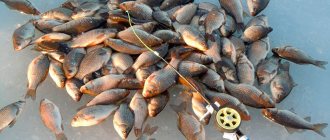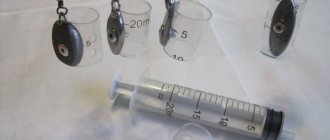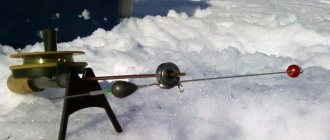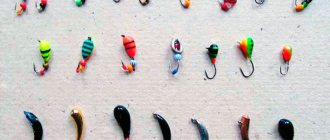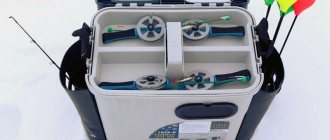The process of making fishing accessories is as exciting as fishing itself, which is why many fishermen prefer homemade accessories for their favorite activity.
Professionals in their field can create gear that can increase the catch several times.
The things at hand for making gear are always unique and inimitable, since creating them is an exclusively creative activity. How to make fishing gear with your own hands?
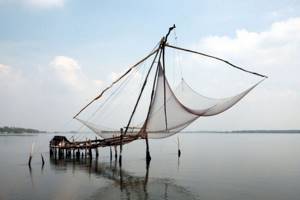
What materials are needed to make gear?
In the arsenal of a fisherman who is accustomed to making homemade fishing tackle with his own hands, there must be the following materials:
- Wooden chips, blocks, planks. The wood is ideal for making a wobbler or popper.
- Metal sheets for various lures.
- Wire as a fastening for rings, hooks, bait.
- Hammer.
- Hacksaw.
- Sanding sheet.
- File.
- Paints and varnishes for decorating gear.
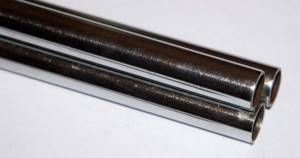
If you have at least some available tools, then you can easily make a fishing accessory.
DIY "Helicopter"
“Helicopter” is one of the types of winter fishing gear that you can make with your own hands from scrap materials. This thing is made of metal.
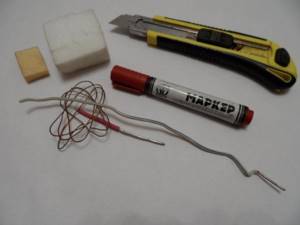
A metal can of canned food or drink is perfect for the role of the main material for production.
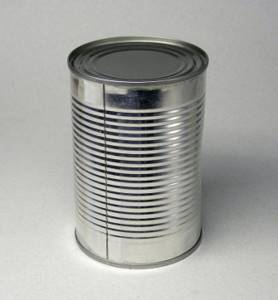
This type of tackle consists of a metal pinwheel, long and short wires with hooks, a locking ring, a sinker, a fishing line and a lock. With this bait you can fish all winter and get a good catch.
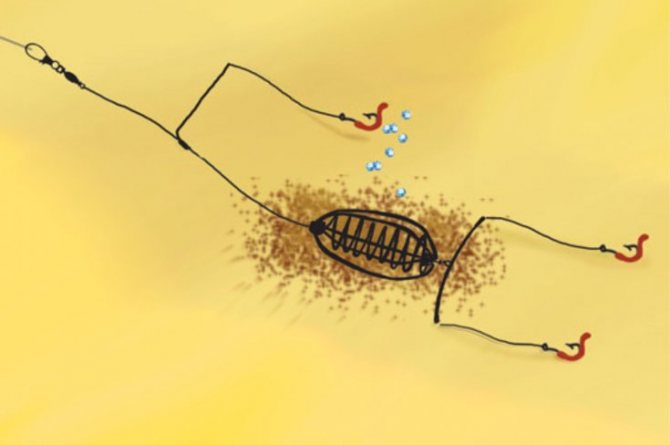
Spinner-spoon
Very often this spoon is used when fishing for perch and you can easily make it yourself. Below we will similarly explain how to make a lure for perch with your own hands:
- Take thin sheet metal, steel will do just fine, if not, then you can take an ordinary tin can from any drink. Cut a square sheet with metal scissors and straighten it, this will make it easier to draw the contours of the bait.
- Our bait will be in the shape of a diamond, use a permanent marker to mark the dimensions on the sheet.
- Using metal scissors, cut out the prepared layout.
- Calculate where the minor axis is located, along it you need to bend the metal gradually giving the shape of the bait.
- After giving the workpiece a shape, you need to solder a small triangle of copper, this can be done using a soldering iron.
- Then the hook is soldered to the copper plate.
- You will need to secure a ring at the top of the triangle; it is necessary for attaching the fishing line. To do this, drill a hole, it is advisable to wet the drilling site, otherwise you may damage the drill or part.
- Finally, we need to sand our vibrator and then it will be ready for use. Below you can see photos of do-it-yourself spinners.
Read here DIY silicone baits - making bait, types, equipment and tips for beginners (100 photos)
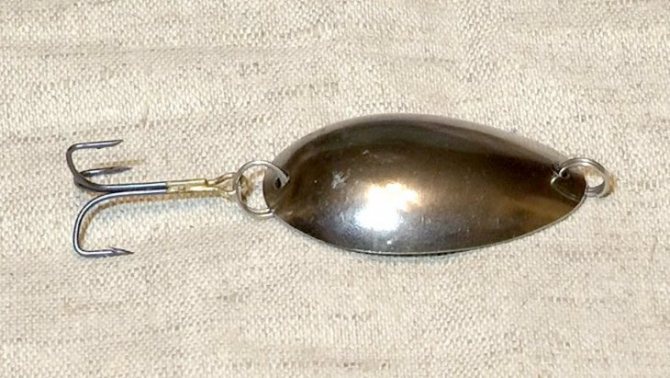
Making wobblers
To make such gear for summer fishing as a wobbler with your own hands, you will need a wooden block at least 5 centimeters in size.
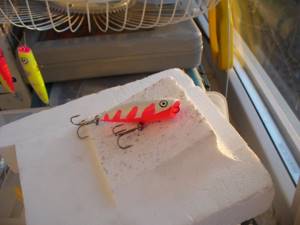
You need to cut a cigar-shaped blank from a block and paint it with bright colors. To make the bait more attractive, draw eyes and scales on it.
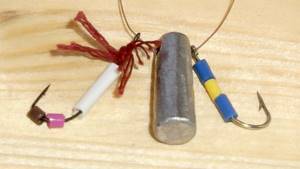
Check it out here too!
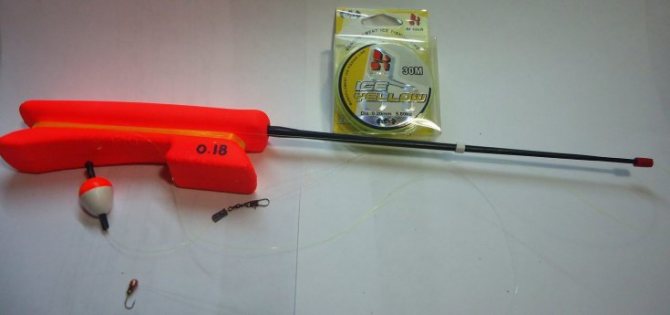
Do-it-yourself winter fishing rod - an overview of the best options. Instructions for creating an unusual winter fishing rod from different materials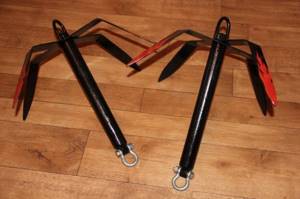
DIY boat anchor: making a homemade anchor for PVC boats (95 photos and videos)
- How to make a zherlitsa with your own hands - features of making winter and summer gear (110 photos and videos)
To fix the parts together, use strong, waterproof glue or epoxy resins.
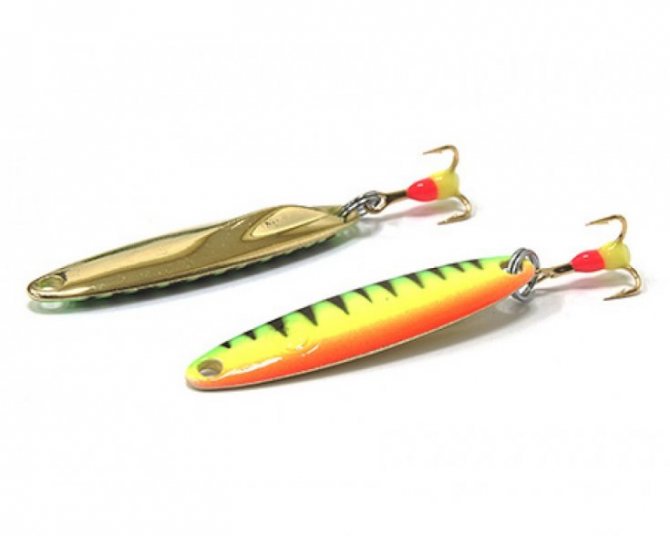
Booklets from the printing house ALFVIT 2000
For its clients, the ALFAVIT 2000 printing house offers 3 booklet manufacturing technologies:
- risographic (one-color, fast and inexpensive),
- digital (multicolor, high definition and expensive),
- offset (multi-color, high definition and economical for large runs).
The printing house employees are well trained and have valuable experience working with modern printing equipment, which allows them to fulfill each order with the highest quality and in the shortest possible time - urgent printing of booklets is now available to everyone. And highly qualified designers will help you create a unique and catchy design layout that fully meets the customer’s wishes.
View all articles
How to make a “garland” tackle?
“Garland” is used for simple fishing with any type of bait. Its essence lies in the fact that hooks for bait are attached to the fishing line in several places, at different levels.
- It is necessary to knit a garland without knots, as they can scare away the fish.
- As the knitting progresses, all hooks with bait are attached to the fishing line, except for the last one. The final hook is already attached to the line with a knot.
- There can be an unlimited number of baits on one line.
- To fish with a garland tackle, you will need a small fishing rod 15-20 centimeters long.
- The optimal fishing line diameter is 0.12-0.15 mm.
- “Garland” allows you to catch fish simultaneously at different depths and this is its undeniable advantage.
- On one type of tackle you can use different types of bait - bloodworms, jigs, spinners, and so on.
- This type of fishing is effective even during periods of significant decline in the bite.
- The tackle is easy to make with your own hands and easy to use.
- It is quite difficult to catch large species of fish with such bait.
- When biting is active, baits can interfere with each other and then the number of fish caught will decrease significantly.
- If you plan to move from one hole to another while fishing, then keep in mind that the longer the line, the more difficult it will be to carry.

Is it possible to catch a big fish with your bare hands?
If you wish or have a certain amount of luck, you may catch a fairly large specimen while fishing with your hands. It is very difficult to catch one of these, because they are stronger than their smaller brothers, and, accordingly, they will resist longer and more desperately. It’s probably not worth putting your finger in his mouth either; in this case, the option with gills is more suitable.
We recommend reading:
How to choose equipment for a winter hike
Try to immobilize the fish. If this cannot be done only with your hands, additionally press it to the bottom with your foot. When she gets tired of fighting you, pull her out and throw her ashore as far from the water as possible. It has happened more than once that fish flutter their way back to the river or lake, and all efforts are wasted.
It is not always worth spending your energy on catching big fish. If you previously caught a couple of kilograms of smaller fish, let the giant live and do not waste your energy on it. You still have to collect your catch along the shore.
Author of the publication
offline 2 years
Nika
7
I am interested in hiking and traveling, photography and videography. I have been going hiking since childhood. The whole family went and went - sometimes to the sea, then to the river, to the lake, to the forest. There was a time when we spent a whole month in the forest. We lived in tents and cooked over fires. This is probably why I am still drawn to the forest and, in general, to nature. I travel regularly. About three trips a year for 10-15 days and many 2 and 3 day hikes.
Comments: 0Publications: 668Registration: 10/23/2018
Nika Wild Survival
Tackle for sea fishing
To make gear for sea fishing with your own hands, you should know the features of this type of hobby:
Sea fish are much more active and faster than river fish, since the depths of the sea are inhabited by a huge variety of inhabitants of different sizes.
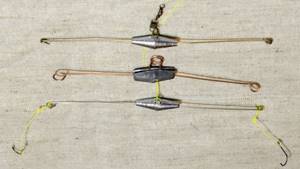
Like river inhabitants, saltwater fish are very sensitive to weather changes, so depending on the weather, the bite may be less active.
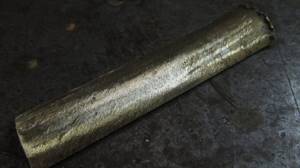
Check it out here too!
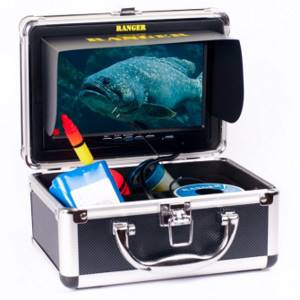
Fishing camera: rating of the best models and tips for building a homemade device (135 photos + video)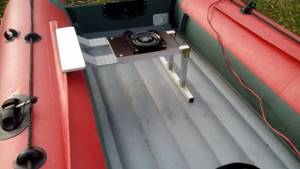
Do-it-yourself boat tuning - modification options, tuning directions and improvements to serial PVC boats (130 photos and videos)

DIY bait recipes: simple and effective baits for fishing for different types of fish (125 photos and videos)
There is no point in fishing during a storm, as well as in hot weather, since the fish go to the bottom and are not active.
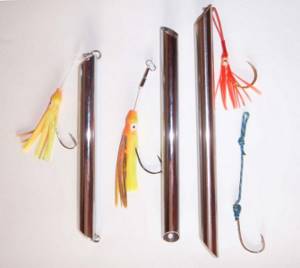
In addition to the above, the climatic conditions of the sea coasts, for example, strong gusts of wind, should also be taken into account.
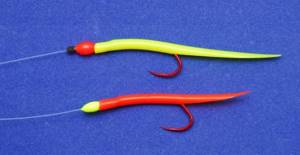
We can conclude that equipment for sea fishing should be more massive and heavy, so that it can be cast a good distance in strong winds.
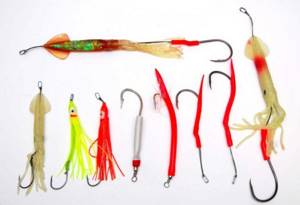
Sea fishermen often use jigs, cranks, spinners, and jigs.
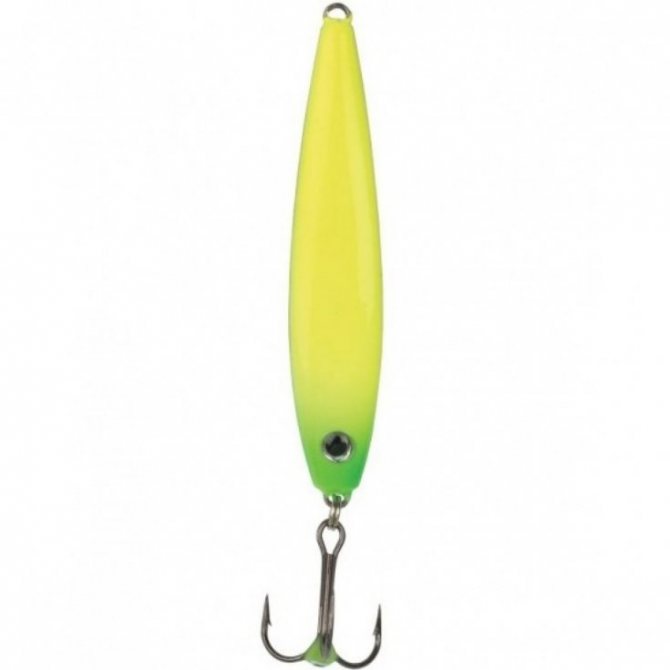
How to catch live fish with your hands: tips
It happens that a person may find himself in conditions close to almost primitive ones. For example, getting lost in the forest. The first question that may arise in his mind, in addition to finding a way back or a settlement, is what to eat and how to get food for himself. Fishing could be one way out of this situation. Moreover, the lack of a fishing rod will most likely not become an obstacle to a fish dinner.
Contrary to popular belief, catching fish with your bare hands is not something out of science fiction, but a very real way to feed yourself. To do this you just need to know some features. For example, in order not to scratch your feet, you need to go into the water with shoes on, and in order not to freeze in the first five minutes of fishing, you also need to be dressed, preferably in something waterproof. It is better to start fishing in the morning.
This is explained by the fact that after an active night swim, the fish, as a rule, rests in the coastal zone, hiding in thickets of water lilies and between snags of trees.
Before you start fishing, you should carefully study the area. To do this, walk along the shore and look for possible fishing spots. As a rule, in clear morning water, a concentration of fish is immediately visible. If you are on the bank of a river, determine which direction the current is going. You will need to start moving in the water against him. After this, go into the water and trample the bottom with your feet. It is necessary to muddy the water: in this way the fish will go blind, that is, you will see it, but it will not see you. The depth near the shore is usually shallow, and reaching the bottom with your hands and still remaining half dry is not difficult.
In addition to underwater thickets, the fish likes to hide between rocks. Usually this is done by the roach, which is the one that swims most in the river. Larger representatives like to spend the morning hours in the washouts under the shore. To catch them, you need to lower your palms into the water, touching the bottom with the edges and turning them towards each other . Thus, you will get a kind of trap. Once you have found the fish, try to slowly determine its size. Usually its nose is turned against the current, and you need to find its tail. You should grab the fish with both hands on both sides at once.
We recommend reading:
How to choose equipment for a winter hike
If you feel that the fish is large, such as an adult perch or burbot, do not be afraid to put your finger in its mouth or under its gills. In this way, you will deprive her of the ability to move and weaken her breathing, which will lead to increasingly weakening resistance. At the same time, squeeze her tail with your hand, and after that you can safely pull her out of the water. Thus, continue moving against the current, periodically muddying the water with your feet. If the bottom is muddy, the sediment will float for a long time. You will have to work hard with sandy ones, since sand is heavier than silt, and it will sink back to the bottom faster.
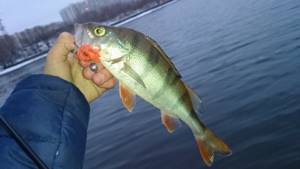
Another way to immobilize a fish is to point its nose into the mud after you have grazed it. Not being able to breathe will soon make her attempts to escape increasingly weaker and more futile, and then you can easily pull her out into the air. This works especially well on crucian carp. This way you can catch several of them. If you feel like you've stepped on it, feel free to press it down further. your goal is to catch it and then eat it, not to keep the skeleton intact. As soon as you feel that it has stopped fluttering, you can safely pull it out with your hands, but again only with both at once.
It is worth remembering that in addition to fish, other animals, such as insects or frogs, can live at the bottom. If you are afraid of one or the other, your violent reaction may scare off a potential catch. Therefore, while you are studying the water from the shore, mark for yourself the habitats of croaking and crawling creatures and try to avoid them later.
